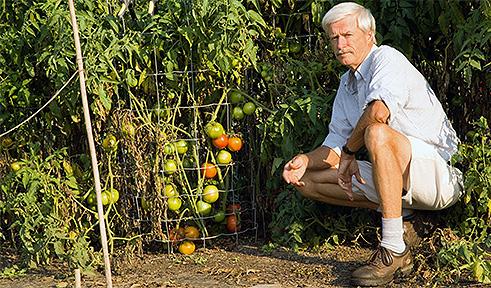Arthur Trese

Recent News
Education
Ph.D., University of Missouri, 1989
Courses
- PBIO 100 (World of Plants)
- PBIO 103 (Plants and People)
- PBIO 412 (Plant Pathology)
- T3 402B (Intro to Alternative Agriculture)
Departmental Service
- Curriculum Committee
- Recruitment Committee
- Undergraduate Advising Coordinator
- West State Street Research Site Committee
Research Program Summary
- Molecular Plant-Microbe Interactions
The legume-Rhizobium symbiosis is of great importance in providing fixed nitrogen, both in agriculture and natural ecosystems. The level of interaction between host plants and bacterial symbiont range from intimate, highly evolved interactions to those others that approach parasitism. This range of complex associations provides an ideal system for the study of plant-microbe interactions.
Current and Recent Student Research Projects
- Characterization of bean mutation that selectively prevents nodulation in common beans: an opportunity to improve nitrogen fixation
- Plant gene expression during nodule senescence; limitation on and regulation of nitrogen fixation
- Involvement of plant “defense” genes in maintaining the balance between symbiont and parasite
- Characterization of peanut nodulation as an example of a more “primitive,” yet extremely efficient, interaction
Selected References
Bryan, J.R., Trese, A.T., and Braselton, J.P. 1996. Molecular karyotypes for the obligate, intracellular, plant pathogens Plasmodiophora brassicae and Spongospora subterranea. Mycologia 88:358-360.
Grant, W.M., and Trese, A.T. 1996. Developmental regulation of nodulation in Arachis hypogea (peanut) and Aeschynomene americana (jointvetch). Symbiosis 20:247-258.
Trese, A.T. 1995. A single dominant gene in McCall soybean prevents effective nodulation with Rhizobium fredii USDA257. Euphytica 81:279:282.
Purdom, D., and A.T. Trese. 1995. Morphological and molecular characterization of host-conditioned ineffective root nodules in cowpea (Vigna unguiculata [L.] Walp.). Plant Physiology 109:239-244.
Anderson, E.J., A.T. Trese, O.P. Sehgal, and J.E. Schoelz. 1992. Characterization of a chimeric cauliflower mosaic virus isolate that is more severe and accumulates to higher concentrations than either of the strains from which it was derived. Molecular Plant Microbe Interactions 5:48-54.